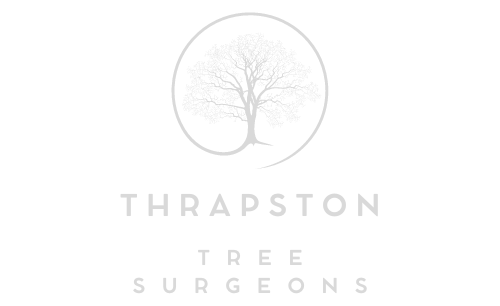Common Signs Your Tree Needs Professional Care
Introduction: Trees are a valuable asset to any property, providing shade, beauty, and environmental benefits. However, trees require care and attention to thrive like any living organism. Recognising when your tree needs professional care can prevent potential hazards and ensure the longevity of your green companions. Here are some common signs that indicate it’s time to call in the experts at Thrapston Tree Surgeons:
1. Dead or Dying Branches
Dead or dying branches are not just unsightly; they can pose serious risks to property and safety. If you notice branches that lack foliage, have brittle bark or show signs of decay, it’s crucial to have them inspected by a professional arborist. Pruning or removing these branches can prevent them from falling unexpectedly and causing damage.
2. Leaning or Unstable Trees
A tree that leans significantly or appears unstable may indicate root or structural problems. Factors such as soil erosion, root damage, or windstorms can compromise a tree’s stability over time. A professional assessment can determine whether stabilisation techniques, such as cabling or bracing, are necessary to ensure the tree’s safety and longevity.
3. Excessive Leaf Loss
While trees naturally shed leaves in autumn, excessive leaf loss outside the normal seasonal cycle can indicate underlying issues. Causes may include nutrient deficiencies, pests, diseases, or environmental stressors. A tree surgeon can diagnose the root cause and recommend appropriate treatments to restore the tree’s health.
4. Cracks or Cavities in the Trunk
Visible cracks, cavities, or holes in the tree trunk are signs of internal decay or structural weakness. These issues compromise the tree’s stability and increase the risk of branch failure or complete tree collapse. Prompt evaluation by a tree specialist can determine the extent of damage and prescribe necessary interventions to mitigate risks.
5. Sudden Decline in Health
If your tree exhibits sudden changes in foliage colour, size, or density, it could be a symptom of stress, disease, or pest infestation. Early detection and intervention are crucial to prevent further decline and promote recovery. A qualified arborist can conduct a thorough assessment, perform diagnostic tests, and recommend appropriate treatments or care strategies.
6. Visible Fungal Growth
Fungal growth on the trunk or around the base of a tree indicates decay within the tree’s tissues. Fungi feed on decaying organic matter, weakening the tree’s structure and making it more susceptible to breakage or disease. Professional treatment may involve pruning affected areas and improving tree health to prevent further fungal spread.
7. Root Issues
Visible root damage, such as exposed roots, root girdling, or soil heaving, can disrupt a tree’s ability to absorb nutrients and water. Root issues often manifest as reduced foliage density, stunted growth, or leaning. A certified tree surgeon can assess root health, address underlying causes, and implement solutions to support root development and overall tree health.
8. Encroaching on Structures or Utilities
Trees that grow too close to buildings, power lines, or underground utilities pose risks to property and safety. Professional tree care services can safely prune or remove branches to mitigate risks and ensure compliance with local regulations regarding tree proximity to structures and utilities.
Conclusion: Regular observation and proactive care are essential for maintaining healthy trees and safeguarding your property. If you notice any of these common signs indicating that your tree may need professional attention, don’t hesitate to contact experienced arborists who are equipped to assess tree health, provide expert advice, and deliver tailored solutions to enhance the beauty and safety of your outdoor environment.
Call us on: 01832 770 681
Click here to find out more about Thrapston Tree Surgeons
Click here to complete our contact form and see how we can help you with your tree’s needs.

